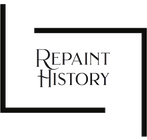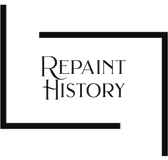Angela Fraleigh

This month we sat down with the amazing New York based artist Anegla Fraleigh!
Angela Fraleigh’s work peers through an intersectional feminist lens and asks: How do the stories we tell; the fairytales, myths, legends and religious narratives, along with the images and objects that accompany them, express and influence cultural attitudes about contemporary women and other marginalized figures, and how do they shape our beliefs about gender and sexuality? Fraleigh weaves together realism and abstraction in lush and complex works, ranging from intimate portraits to monumental figure paintings that reimagine women’s roles in art history, literature, and contemporary media. Recently, her practice has become site-specific in nature and has led to collaboration with institutions to mine invisible histories or dormant narratives in their collection.
Angela Fraleigh earned her MFA from Yale University School of Art and her BFA from Boston University. Her solo exhibitions include PPOW Gallery in New York, Inman Gallery in Houston, TX, Peters Projects in Santa Fe, NM and James Harris Gallery in Seattle. She has exhibited at the Museum of Fine Arts Houston, the Kemper Museum of Contemporary Art and has been the recipient of several awards and residencies including the Yale University Alice Kimball English grant, The Sharpe-Walentas Studio Program Brooklyn, NY and the Bemis Center for Contemporary Arts in Omaha, NE.

Fraleigh has created site-specific solo projects for the Edward Hopper House Museum and Study Center, and the Vanderbilt Mansion National Historic Site, the Everson Museum of Art and currently has an exhibition on view at the Delaware Art Museum. Fraleigh looks forward to upcoming exhibitions at the Reading Public Museum, the Swope Art Museum and the Montclair Art Museum in 2020. She currently lives and works in Allentown, PA, where she is Associate Professor and Department Chair at Moravian College.
What are some of the challenges that you have faced as an artist? Do you still face these challenges or have your managed to overcome them? If so, how?
At this stage, many of the challenges I face are self-made, I suppose. Insecurity, self-doubt, overcommitting to external requests and so on. I have a young family, a full-time teaching position and an active exhibition schedule so time and money are moving targets. Practically speaking I try to get help where and when it seems appropriate, when my budget will allow: childcare, house cleaners, take-out meals, admin help, studio assistance, etc.
In the studio, I tend to be overly critical and I can shut down impulses, or the first sparks of an idea before they start to take shape. Thankfully some ideas are persistent and make themselves known. You can push away the good ones for only so long. I’m getting better at seeing them early on and letting them have their way with me. Now, I make it a priority to stay out of the way and trust the process. It’s sometimes hard to know when enough is enough, to not over do it, to let the good be good enough and leave it alone--- to let certain passages live and breathe.

Has your practice changed over time? Who has influenced it? Were any of them women?
Well, my overarching practice is about how meaning gets made. And, by that I mean, how we come to believe the things we believe- personally, culturally, politically and so on.
Over the years I’ve looked to literature, advertising, cinema and social theories, as well as personal histories, to question how cultural narratives are applied, structured, who that benefits and how… and also how that comes to shape our experiences in the world.
A recent development in my practice has become site-specific in nature and has led to partnerships with curators, museum directors, and historians in order to work directly with an institution’s collection. Institutions are not “neutral”, and I have been fortunate to partner with curators who understand the institution’s role in exposing historical power dynamics and what effect revealing the spectrum of tales to be told through a different lens can have. Illuminations around forgotten female figures from history are unraveled, revealed and celebrated as I envision a harmonious, specifically female space, inspired by several historical and contemporary texts that place a fantastical fictional feminine dreamland against our current political landscape.

I think my interest in power dynamics regarding identity, race, gender, and class, is directly related to my family history. My mother in particular is a huge influence and probably the reason I became an artist. She was 17 when I was born and though she had suffered unnamable trauma in her own life, my mother was able to form dreams and aspirations for herself through the world she viewed on television and movies.
As a child, I observed how she used the idealized lives on screen to contextualize her own situation. She knew something better existed in the world and she was determined to give it to me. This set the tone for how I would come to understand the world I lived in, to look for the hidden truths, not take everything at face value and to ask what power we have available to us and how to leverage and use that power. That kind of thinking is largely how my own artistic pursuits have been formed. My interest in narrative structure, how stories are created, sustained and often idealized, has set the parameters of the discourse found in my current paintings.
With my latest series I make work about the invisible histories and dormant narratives specifically around women. For instance, my first major museum exhibition, Between Tongue and Teeth, at the Everson Museum of Art in Syracuse, NY granted access to the museum’s extensive collection, from which I created several new paintings and sculptures inspired by women of the Arts and Crafts movement, Edo period Japanese woodblock prints and the suffrage movement. Shadows Searching for Light, at Edward Hopper House Museum in Nyack, NY, helped illuminate narratives around Jo Nivison Hopper, Edward’s wife, who was a successful artist in her own right, and Hopper’s sole model after they married.
Are there any new mediums or technologies that you’re excited about, or incorporating into your practice?
This latest trajectory of my work has been archaeological and investigative. Not only has my research led me to uncover many valuable stories and contributions made by women and artists but it has also led me into different modes of working--- from creating delicate handmade flowers or working in ceramics and sculpture, to creating wallpaper and large scale immersive installations. I’ve also expanded my projects through collaboration with writers, dancers and other talented creatives.
I’m currently working on an interactive, subversive language piece with a computer coding friend of mine. It’s pretty exciting because I never know what is going to happen next.

What is your advice for a woman entering the art world?
I feel cautious dolling out advice because I think women are often “over advised”. We are conditioned to believe that if we act the right way, do all the right things, we’ll be good enough and get the prize! Whatever that means. And it is not only a horrible way to postpone your happiness- it’s exhausting and doesn’t necessarily work.
We’re conditioned, shamed, and gaslit into thinking we aren’t getting ahead because we aren’t good enough or perfect. It’s BS. Gender and Racial bias is a thing and it exists in all corners of our culture, including the arts. And you have eff all that noise. You are good enough, amazing(!) just as you are. You are a beautiful work in progress… and be thankful for that because if you were perfect and done there would be nothing to want or live for:)
So, rather than give advice I’d like give permission:
You are allowed to have a good time. You are allowed to have fun. You are allowed to want what you want. You are allowed to reach out to people. You are allowed to seek support. You are allowed to advocate for your work. You are allowed to champion it. You are allowed to be your genius self and show it full force. You are allowed to not care what other people think. You are allowed to be selfish. You are allowed to take care of you first and foremost. You are allowed to feel good.
In fact, if all of the above resonates with you, it is not only allowed but highly encouraged. Be full of yourself, you do not need to perform for anyone. Take up space, celebrate all that you are, external approval only gets you so far, it is that internal love, that’s the juice.
You are allowed to be, do or have anything you want. So just go for it already.

That being said here are some practical tips.
- Invest in your work, Invest in your business and Invest in good images.
- Find your people- the people who will support your work, encourage you, challenge you, they have a similar set of goals or they have a similar line of thinking…
- Think about the legacy, if there is anything my research into these dead women artists its that how your life is recorded is important. Women’s lives aren’t recorded or mythologized in the same way men’s work is and it’s time to change that. Push for publications, pitch, do the soft lob, when all else fails ask yourself what would a straight white man do;)
- Dream. Dream big, find out what you want, like really really want, not someone else’s idea of what should want.
- Go to exhibitions and support people in your pond - other artists. look for residencies.
- Say thank you. A thank you is not only always appreciated it is a great conversation starter.
- Build your network. Do studio visits,
- Build your community. Ask yourself, what assets do I have, how can I share them with others.
- Follow-up, follow-up, follow-up..
- If you have an exhibition, publish your own catalogue. Set aside $ for stipends. Perception is everything!!!
- Really Do your research. (don’t be spam) this is not a spray and pray situation… select people you think you actually have a chance with and start a conversation.
- Think about why they would care? help them see how you are a match, who are they working with, writing about, etc. that you think is in alignment with your own work- similar themes, similar aesthetic. Show that you took the time to learn about them, who they are, what they’re into. This doesn’t guarantee anything but it might keep them from deleting immediately.

And finally What quote do you live by?
Say Yes and figure it out later is one I live by- see the above note about over committing though;)
Lately, it’s “life is supposed to be fun” and “there’s nothing serious going on here”. It helps me keep things light, helps me enjoy the present moment, keeps me from getting too scared and helps me prioritize things that actually matter, while not getting too bogged down in the negative, sometimes painful, truths of life.



